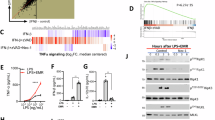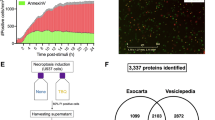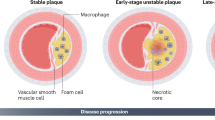Abstract
The present study characterized two different internalization mechanisms used by macrophages to engulf apoptotic and necrotic cells. Our in vitro phagocytosis assay used a mouse macrophage cell line, and murine L929sAhFas cells that are induced to die in a necrotic way by TNFR1 and heat shock or in an apoptotic way by Fas stimulation. Scanning electron microscopy (SEM) revealed that apoptotic bodies were taken up by macrophages with formation of tight fitting phagosomes, similar to the ‘zipper’-like mechanism of phagocytosis, whereas necrotic cells were internalized by a macropinocytotic mechanism involving formation of multiple ruffles directed towards necrotic debris. Two macropinocytosis markers (Lucifer Yellow (LY) and horseradish peroxidase (HRP)) were excluded from the phagosomes containing apoptotic bodies, but they were present inside the macropinosomes containing necrotic material. Wortmannin (phosphatidylinositol 3′-kinase (PI3K) inhibitor) reduced the uptake of apoptotic cells, but the engulfment of necrotic cells remained unaffected. Our data demonstrate that apoptotic and necrotic cells are internalized differently by macrophages.
Similar content being viewed by others
Log in or create a free account to read this content
Gain free access to this article, as well as selected content from this journal and more on nature.com
or
Abbreviations
- PS:
-
phosphatidylserine
- PI:
-
propidium iodide
- FACS:
-
fluorescence activated cell sorter
- SEM:
-
scanning electron microscopy
- TEM:
-
transmission electron microscope
- LY:
-
Lucifer Yellow
- HRP:
-
horseradish peroxidase
- PI3K:
-
phosphatidylinositol 3′-kinase
- mTNF:
-
recombinant murine tumor necrosis factor
- anti-Fas antibodies:
-
agonistic antihuman Fas antibodies
- DAPI:
-
2,6-diamidino-2-fenylindole
- DAB:
-
diaminobenzidine
- PARP:
-
poly(ADP-ribose) polymerase
References
Kerr JF, Wyllie AH and Currie AR (1972) Apoptosis: a basic biological phenomenon with wide-ranging implications in tissue kinetics. Br. J. Cancer 26: 239–257.
Savill J, Dransfield I, Hogg N and Haslett C (1990) Vitronectin receptor-mediated phagocytosis of cells undergoing apoptosis. Nature 343: 170–173.
Savill J, Hogg N, Ren Y and Haslett C (1992) Thrombospondin cooperates with CD36 and the vitronectin receptor in macrophage recognition of neutrophils undergoing apoptosis. J. Clin. Invest. 90: 1513–1522.
Brown S, Heinisch I, Ross E, Shaw K, Buckley CD and Savill J (2002) Apoptosis disables CD31-mediated cell detachment from phagocytes promoting binding and engulfment. Nature 418: 200–203.
Ogden CA, deCathelineau A, Hoffmann PR, Bratton D, Ghebrehiwet B, Fadok VA and Henson PM (2001) C1q and mannose binding lectin engagement of cell surface calreticulin and CD91 initiates macropinocytosis and uptake of apoptotic cells. J. Exp. Med. 194: 781–795.
Gershov D, Kim S, Brot N and Elkon KB (2000) C-Reactive protein binds to apoptotic cells, protects the cells from assembly of the terminal complement components, and sustains an antiinflammatory innate immune response: implications for systemic autoimmunity. J. Exp. Med. 192: 1353–1364.
Hanayama R, Tanaka M, Miwa K, Shinohara A, Iwamatsu A and Nagata S (2002) Identification of a factor that links apoptotic cells to phagocytes. Nature 417: 182–187.
Fadeel B and Kagan VE (2003) Apoptosis and macrophage clearance of neutrophils: regulation by reactive oxygen species. Redox. Rep. 8: 143–150.
Fadok VA, Bratton DL, Konowal A, Freed PW, Westcott JY and Henson PM (1998) Macrophages that have ingested apoptotic cells in vitro inhibit proinflammatory cytokine production through autocrine/paracrine mechanisms involving TGF-beta, PGE2, and PAF. J. Clin. Invest. 101: 890–898.
Savill J, Dransfield I, Gregory C and Haslett C (2002) A blast from the past: clearance of apoptotic cells regulates immune responses. Nat. Rev. Immunol. 2: 965–975.
Gao Y, Herndon JM, Zhang H, Griffith TS and Ferguson TA (1998) Antiinflammatory effects of CD95 ligand (FasL)-induced apoptosis. J. Exp. Med. 188: 887–896.
Chen W, Frank ME, Jin W and Wahl SM (2001) TGF-beta released by apoptotic T cells contributes to an immunosuppressive milieu. Immunity 14: 715–725.
Denecker G, Vercammen D, Steemans M, Vanden Berghe T, Brouckaert G, Van Loo G, Zhivotovsky B, Fiers W, Grooten J, Declercq W and Vandenabeele P (2001) Death receptor-induced apoptotic and necrotic cell death: differential role of caspases and mitochondria. Cell. Death Differ. 8: 829–840.
Proskuryakov SY, Konoplyannikov AG and Gabai VL (2003) Necrosis: a specific form of programmed cell death? Exp. Cell Res. 283: 1–16.
Krysko O, De Ridder L and Cornelissen M (2004) Phosphatidylserine exposure during early primary necrosis (oncosis) in JB6 cells as evidenced by immunogold labeling technique. Apoptosis 9: 495–500.
Hirt UA and Leist M (2003) Rapid, noninflammatory and PS-dependent phagocytic clearance of necrotic cells. Cell. Death Differ. 10: 1156–1164.
Brouckaert G, Kalai M, Krysko DV, Saelens X, Vercammen D, Ndlovu M, Haegeman G, D'Herde K and Vandenabeele P (2004) Phagocytosis of necrotic cells by macrophages is phosphatidylserine dependent and does not induce inflammatory cytokine production. Mol. Biol. Cell 15: 1089–1100.
Swanson JA and Watts C (1995) Macropinocytosis. Trends Cell Biol. 5: 424–428.
Hoffmann PR, deCathelineau AM, Ogden CA, Leverrier Y, Bratton DL, Daleke DL, Ridley AJ, Fadok VA and Henson PM (2001) Phosphatidylserine (PS) induces PS receptor-mediated macropinocytosis and promotes clearance of apoptotic cells. J. Cell Biol. 155: 649–659.
Krysko DV, Brouckaert G, Kalai M, Vandenabeele P and D'Herde K (2003) Mechanisms of internalization of apoptotic and necrotic L929 cells by a macrophage cell line studied by electron microscopy. J. Morphol. 258: 336–345.
Hart SP, Smith JR and Dransfield I (2004) Phagocytosis of opsonized apoptotic cells: roles for ‘old-fashioned’ receptors for antibody and complement. Clin. Exp. Immunol. 135: 181–185.
Steinman RM and Cohn ZA (1972) The interaction of soluble horseradish peroxidase with mouse peritoneal macrophages in vitro. J. Cell Biol. 55: 186–204.
Steinman RM, Silver JM and Cohn ZA (1974) Pinocytosis in fibroblasts. Quantitative studies in vitro. J. Cell Biol. 63: 949–969.
Norbury CC, Chambers BJ, Prescott AR, Ljunggren HG and Watts C (1997) Constitutive macropinocytosis allows TAP-dependent major histocompatibility complex class I presentation of exogenous soluble antigen by bone marrow-derived dendritic cells. Eur. J. Immunol. 27: 280–288.
Leverrier Y and Ridley AJ (2001) Requirement for Rho GTPases and PI 3-kinases during apoptotic cell phagocytosis by macrophages. Curr. Biol. 11: 195–199.
Hu B, Punturieri A, Todt J, Sonstein J, Polak T and Curtis JL (2002) Recognition and phagocytosis of apoptotic T cells by resident murine tissue macrophages require multiple signal transduction events. J. Leukoc. Biol. 71: 881–889.
Goldman R and Bursuker I (1976) Differential effects of lectins mediating erythrocyte attachment and ingestion by macrophages. Exp. Cell Res. 103: 279–294.
Dini L, Pagliara P and Carla EC (2002) Phagocytosis of apoptotic cells by liver: a morphological study. Microsc. Res. Tech. 57: 530–540.
Geiser M (2002) Morphological aspects of particle uptake by lung phagocytes. Microsc. Res. Tech. 57: 512–522.
Monks J, Rosner D, Jon Geske F, Lehman L, Hanson L, Neville MC and Fadok VA (2005) Epithelial cells as phagocytes: apoptotic epithelial cells are engulfed by mammary alveolar epithelial cells and repress inflammatory mediator release. Cell. Death Differ. 12: 107–114.
Griffin Jr FM, Griffin JA, Leider JE and Silverstein SC (1975) Studies on the mechanism of phagocytosis. I. Requirements for circumferential attachment of particle-bound ligands to specific receptors on the macrophage plasma membrane. J. Exp. Med. 142: 1263–1282.
Griffin Jr FM, Griffin JA and Silverstein SC (1976) Studies on the mechanism of phagocytosis. II. The interaction of macrophages with anti-immunoglobulin IgG-coated bone marrow-derived lymphocytes. J. Exp. Med. 144: 788–809.
Swanson JA and Baer SC (1995) Phagocytosis by zippers and triggers. Trends Cell Biol. 5: 89–93.
Giles KM, Hart SP, Haslett C, Rossi AG and Dransfield I (2000) An appetite for apoptotic cells? Controversies and challenges. Br. J. Haematol. 109: 1–12.
Garcia-Porrero JA, Colvee E and Ojeda JL (1984) The mechanisms of cell death and phagocytosis in the early chick lens morphogenesis: a scanning electron microscopy and cytochemical approach. Anat. Rec. 208: 123–136.
Torii I, Morikawa S, Nagasaki M, Nokano A and Morikawa K (2001) Differential endocytotic characteristics of a novel human B/DC cell line HBM-Noda: effective macropinocytic and phagocytic function rather than scavenging function. Immunology 103: 70–80.
Follett EA and Goldman RD (1970) The occurrence of microvilli during spreading and growth of BHK21-C13 fibroblasts. Exp. Cell Res. 59: 124–136.
Erickson CA and Trinkaus JP (1976) Microvilli and blebs as sources of reserve surface membrane during cell spreading. Exp. Cell Res. 99: 375–384.
Dini L, Ruzittu M, Carla EC and Falasca L (1998) Relationship between cellular shape and receptor-mediated endocytosis: an ultrastructural and morphometric study in rat Kupffer cells. Liver 18: 99–109.
Bruehl RE, Springer TA and Bainton DF (1996) Quantitation of L-selectin distribution on human leukocyte microvilli by immunogold labeling and electron microscopy. J. Histochem. Cytochem. 44: 835–844.
Berlin C, Bargatze RF, Campbell JJ, von Andrian UH, Szabo MC, Hasslen SR, Nelson RD, Berg EL, Erlandsen SL and Butcher EC (1995) alpha 4 integrins mediate lymphocyte attachment and rolling under physiologic flow. Cell 80: 413–422.
Erlandsen SL, Hasslen SR and Nelson RD (1993) Detection and spatial distribution of the beta 2 integrin (Mac-1) and L-selectin (LECAM-1) adherence receptors on human neutrophils by high-resolution field emission S.E.M. J. Histochem. Cytochem. 41: 327–333.
Kalai M, Van Loo G, Vanden Berghe T, Meeus A, Burm W, Saelens X and Vandenabeele P (2002) Tipping the balance between necrosis and apoptosis in human and murine cells treated with interferon and dsRNA. Cell. Death Differ. 9: 981–994.
Saelens X, Festjens N, Parthoens E, Vanoverberghe I, Kalai M, van Kuppeveld F and Vandenabeele P (2005) Protein synthesis persists during necrotic cell death. J. Cell Biol. 168: 545–551.
Wiegand UK, Corbach S, Prescott AR, Savill J and Spruce BA (2001) The trigger to cell death determines the efficiency with which dying cells are cleared by neighbours. Cell. Death Differ. 8: 734–746.
Nauta AJ, Trouw LA, Daha MR, Tijsma O, Nieuwland R, Schwaeble WJ, Gingras AR, Mantovani A, Hack EC and Roos A (2002) Direct binding of C1q to apoptotic cells and cell blebs induces complement activation. Eur. J. Immunol. 32: 1726–1736.
Nauta AJ, Raaschou-Jensen N, Roos A, Daha MR, Madsen HO, Borrias-Essers MC, Ryder LP, Koch C and Garred P (2003) Mannose-binding lectin engagement with late apoptotic and necrotic cells. Eur. J. Immunol. 33: 2853–2863.
Cocco RE and Ucker DS (2001) Distinct modes of macrophage recognition for apoptotic and necrotic cells are not specified exclusively by phosphatidylserine exposure. Mol. Biol. Cell 12: 919–930.
Shpetner H, Joly M, Hartley D and Corvera S (1996) Potential sites of PI-3 kinase function in the endocytic pathway revealed by the PI-3 kinase inhibitor, wortmannin. J. Cell Biol. 132: 595–605.
Peppelenbosch MP, DeSmedt M, Pynaert G, van Deventer SJ and Grooten J (2000) Macrophages present pinocytosed exogenous antigen via MHC class I whereas antigen ingested by receptor-mediated endocytosis is presented via MHC class II. J. Immunol. 165: 1984–1991.
Barker RN, Erwig LP, Hill KS, Devine A, Pearce WP and Rees AJ (2002) Antigen presentation by macrophages is enhanced by the uptake of necrotic, but not apoptotic, cells. Clin. Exp. Immunol. 127: 220–225.
Vercammen D, Brouckaert G, Denecker G, Van de Craen M, Declercq W, Fiers W and Vandenabeele P (1998) Dual signaling of the Fas receptor: initiation of both apoptotic and necrotic cell death pathways. J. Exp. Med. 188: 919–930.
Desmedt M, Rottiers P, Dooms H, Fiers W and Grooten J (1998) Macrophages induce cellular immunity by activating Th1 cell responses and suppressing Th2 cell responses. J. Immunol. 160: 5300–5308.
Cvetanovic M and Ucker DS (2004) Innate immune discrimination of apoptotic cells: repression of proinflammatory macrophage transcription is coupled directly to specific recognition. J. Immunol. 172: 880–889.
Vanden Berghe T, Denecker G, Brouckaert G, Vadimovisch Krysko D, D'Herde K and Vandenabeele P (2004) More than one way to die: methods to determine TNF-induced apoptosis and necrosis. Methods Mol. Med. 98: 101–126.
Acknowledgements
We thank Dominique Jacobus, Barbara De Bondt, and Hubert Stevens for excellent technical assistance. We are grateful to Amin Bredan for copy editing the manuscript. This study was supported by Ghent University GOA Grant no. 12050502.
Author information
Authors and Affiliations
Corresponding author
Additional information
Edited by B Zhivorivsky
Supplementary Information accompanies the paper on Cell Death and Differentiation website (http://www.nature.com/cdd)
Supplementary information
Rights and permissions
About this article
Cite this article
Krysko, D., Denecker, G., Festjens, N. et al. Macrophages use different internalization mechanisms to clear apoptotic and necrotic cells. Cell Death Differ 13, 2011–2022 (2006). https://doi.org/10.1038/sj.cdd.4401900
Received:
Revised:
Accepted:
Published:
Issue date:
DOI: https://doi.org/10.1038/sj.cdd.4401900
Keywords
This article is cited by
-
Comparison of immunohistochemical and qPCR methods from granulomatous dermatitis lesions for detection of leishmania in dogs living in endemic areas: a preliminary study
Parasites & Vectors (2022)
-
Pharmacoengineered Lipid Core–Shell Nanoarchitectonics to Influence Human Alveolar Macrophages Uptake for Drug Targeting Against Tuberculosis
Journal of Inorganic and Organometallic Polymers and Materials (2022)
-
Organic dust exposure induces stress response and mitochondrial dysfunction in monocytic cells
Histochemistry and Cell Biology (2021)
-
Resolvin D1 promotes the targeting and clearance of necroptotic cells
Cell Death & Differentiation (2020)
-
Postbiotic metabolites produced by Lactobacillus plantarum strains exert selective cytotoxicity effects on cancer cells
BMC Complementary and Alternative Medicine (2019)



